
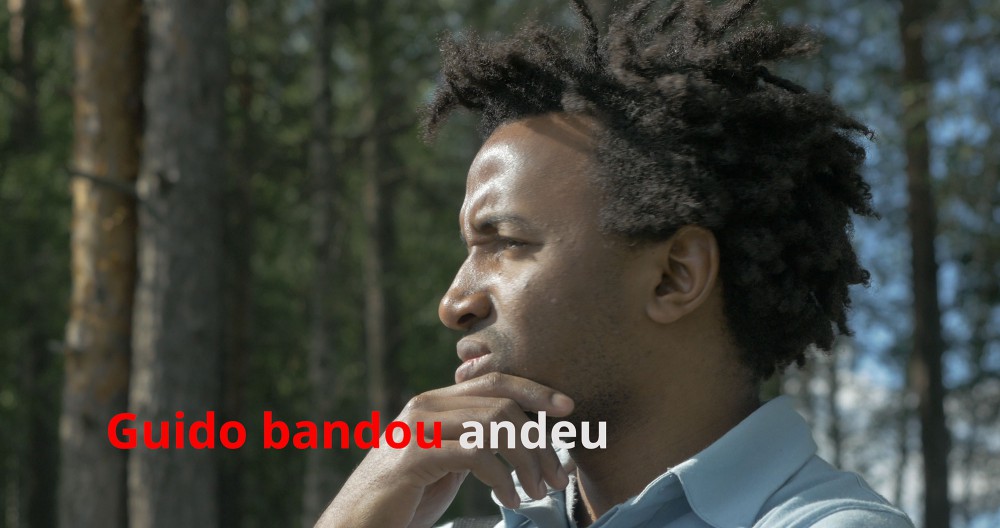
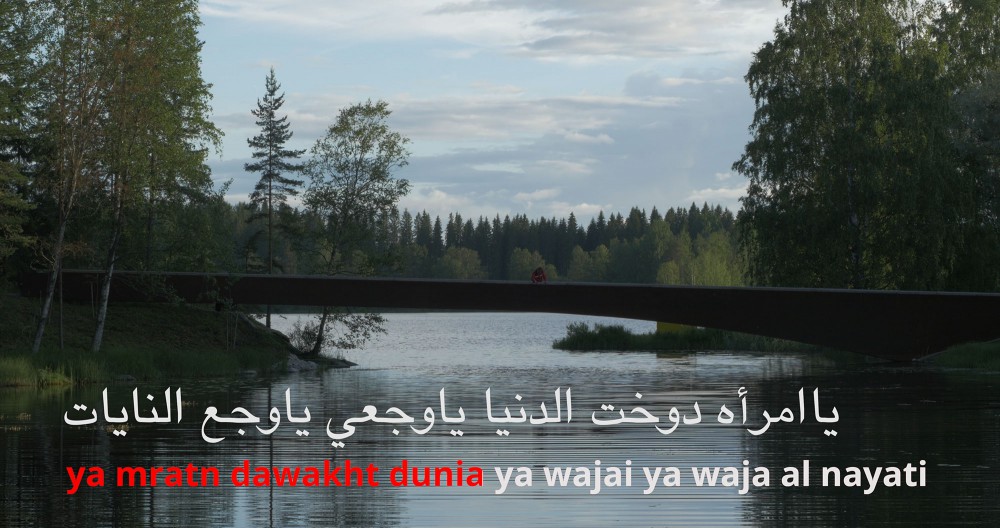
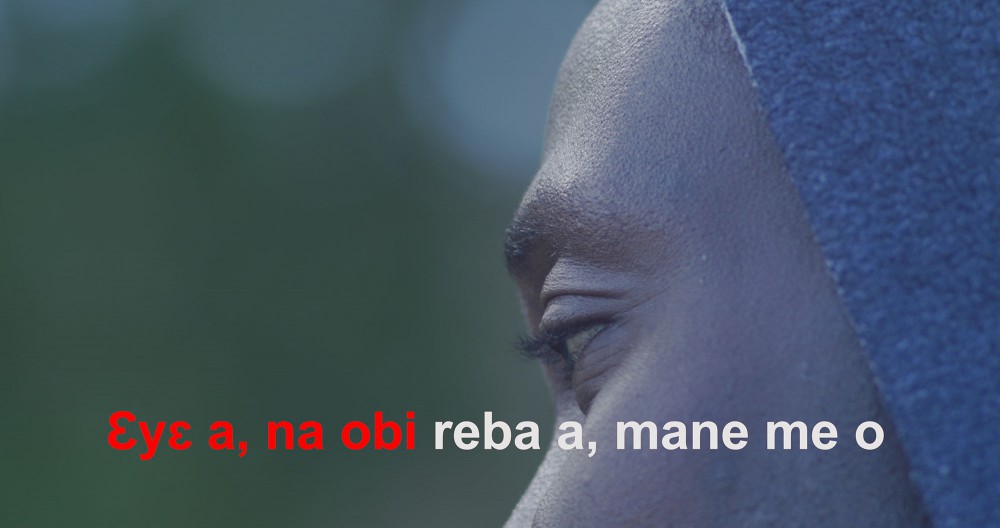
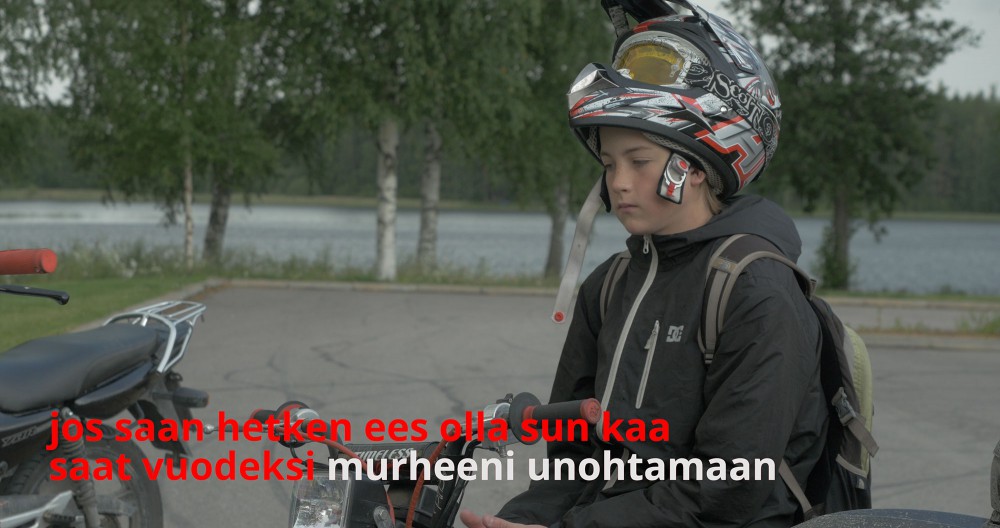
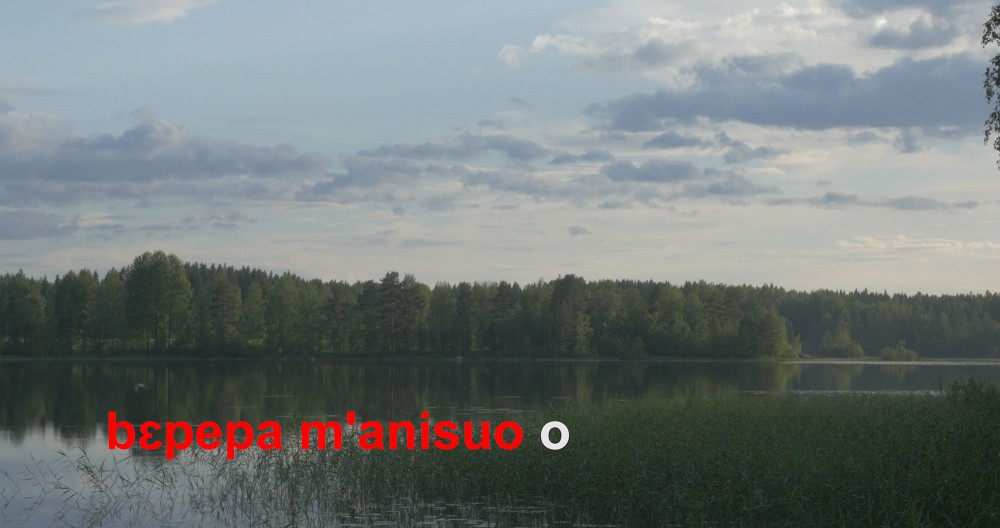
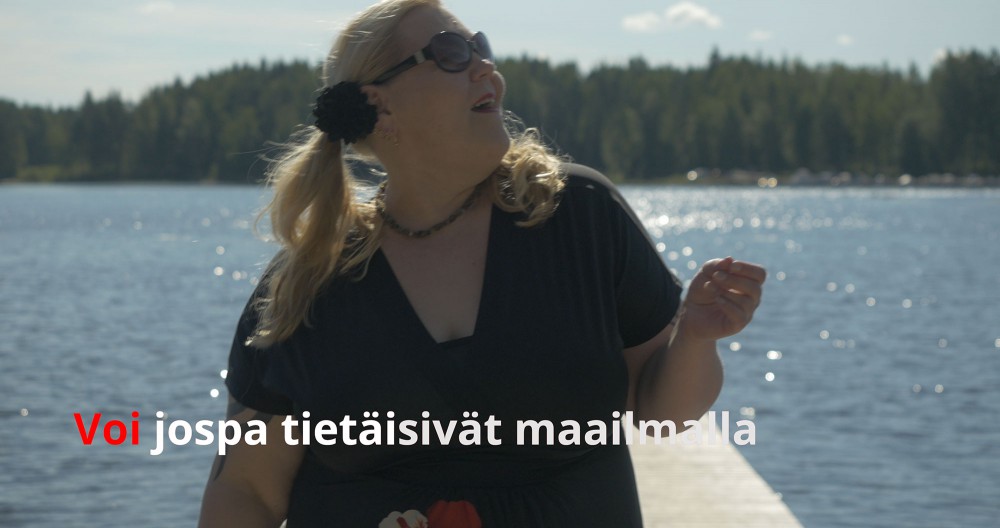









2015
Mänttä, Finland
The Karaoke Projects are a series of video artworks that take on the form of a karaoke style video. This project combines original video footage with lyrics and music to produce a singular experiential video. The videos are presented within the traditional gallery or museum context and are meant to blur the lines between fine art and popular art. During the screening or exhibition, the viewers have the option of engaging with the video works as karaoke (sing-along) or simply watch the videos as they are presented.
The term karaoke comes from Japan and it literally means empty orchestra in Japanese. It translates as “empty track” —music without the vocal track. The idea of musical recordings without the vocal track has been around since the beginning of recorded music, but the idea of using those tracks as entertainment started in 1970s Japan. Over the years, karaoke has developed into an immersive experience, featuring the music tracks with a video screen showing the lyrics —most with moving imagery in the background. In Japan, karaoke is enjoyed among close friends in a rented private room —this is perhaps a reflection of the reserved and private culture in Japan. In many Western cultures, the karaoke experience is a public event with the singer taking on a performance role in front of a public audience. The modern karaoke entertainment format, singing to lyrics displayed on a video screen, has become a popular activity globally.
I first visited Mänttä in 2012 and have since returned numerous times to work with residents. Since the Red Cross Refugee Center relocated to the rural town of Mänttä in 2012, the town has experienced an exponential influx of foreigners. Over the years, tensions have grown between longtime residents and the refugee community. In cooperation with the Finnish Red Cross and Serlachius Museot, I created a set of video artworks that attempted to defuse tensions between the two parties. The videos featured local residents of Mänttä, Finland (longtime residents as well as recent refugees) singing their favorite songs.
In Japanese karaoke culture, we often use the word Juhachiban. It means the number eighteen and refers to THE song that karaoke singer chooses to sing to showcase his vocal prowess. The term goes back to the 19th century Edo period, referring to the “Eighteen Best Kabuki Plays.” In this project, I attempted to compile the “Juhachiban (number eighteen) of Mänttä’s karaoke songs.
This video work is 45 minutes in total length. Fourteen songs in 6 languages are featured (Finnish, Arabic, Fula, Twi, English, and Japanese). The instrumental music used in the video was recorded by collaborating with volunteer musicians at the local youth training center. The video works were presented at Serlachius Residency’s Aleksanterinlinna Gallery and were subsequently acquired by the Serlachius Museot for its permanent collection. During the production, the Finnish national broadcasting company interviewed the project for their long running news program Ajankohtainen Kakkonen.